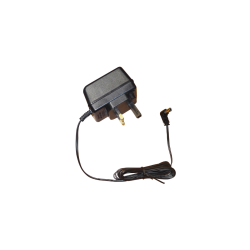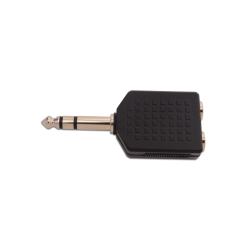Alerta Patient Alarm Accessories
There are 2 products.
Active filters
About Alerta Patient Alarm Accessories
Essential Components for Alarm System Maintenance
Alerta patient alarm accessories provide vital replacement parts and components maintaining patient alarm system functionality across care homes, hospitals, and healthcare facilities throughout England, Scotland, Wales, and Northern Ireland. These essential accessories encompass replacement sensor mats for beds, chairs, and floors subject to wear from patient use, connection leads linking sensors to alarm units, replacement batteries maintaining wireless system operation, mounting brackets and accessories supporting secure installation, and varied components ensuring continued alarm system effectiveness. Healthcare organisations rely on Alerta accessories for replacing worn sensor mats maintaining monitoring capability, restocking connection leads enabling sensor flexibility, maintaining battery supplies for wireless systems, replacing damaged components restoring functionality, and ensuring alarm system readiness through adequate accessory stocks. Modern Alerta accessories incorporate features including guaranteed compatibility with Alerta alarm systems, quality construction ensuring reliable performance, standardised connections simplifying replacement, and appropriate specifications meeting clinical monitoring requirements. The availability of comprehensive Alerta alarm accessories ensures continuous patient monitoring capability, extends alarm system lifespan through component replacement, prevents monitoring gaps from equipment failures, and demonstrates professional equipment management across care environments.
The provision of appropriate Alerta patient alarm accessories directly supports CQC compliance through maintained falls prevention capability, reliable monitoring system operation, and demonstration of professional equipment stewardship. Patient alarm systems require regular maintenance, with sensor mats subject to wear from patient weight, connection leads damaged through use, and batteries depleting in wireless systems. Alerta accessories address these requirements by enabling timely replacement of worn sensor mats maintaining monitoring sensitivity, providing connection leads supporting varied sensor placements, ensuring battery availability maintaining wireless system operation, and offering replacement components restoring damaged equipment functionality. Clinical benefits include continuous falls prevention monitoring through maintained system operation, prevented monitoring gaps when components are readily replaced, extended equipment lifespan through component replacement rather than complete system replacement, and cost-effectiveness through targeted component replacement. Healthcare organisations benefit from Alerta accessories through maintained falls prevention capability preventing monitoring compromises, extended system lifespan protecting capital investment, responsive maintenance through readily available components, and regulatory compliance through documented equipment maintenance. Modern Alerta accessories incorporate features such as quick-change designs, clear compatibility labelling, and quality assurance throughout England, Scotland, Wales, and Northern Ireland.
Selecting and implementing Alerta patient alarm accessory management requires assessment of alarm system inventory, appropriate accessory specification, and establishment of maintenance protocols across care facilities throughout the UK. Organisations should evaluate their Alerta alarm system inventory identifying required accessories, assess typical wear patterns determining replacement schedules particularly for sensor mats subject to patient weight, review historical usage informing stock requirements, and calculate appropriate accessory quantities preventing stockouts. Accessory selection should prioritise genuine Alerta components ensuring guaranteed compatibility, appropriate sensor mat types matching installed systems including bed, chair, and floor variants, adequate connection lead lengths accommodating varied placements, suitable batteries for wireless systems, and quality construction ensuring reliability. Implementation protocols should encompass regular equipment inspection identifying worn components requiring replacement, documented accessory provision and equipment maintenance, staff training on component replacement for simple items like batteries, and procedures ensuring timely procurement. Quality assurance measures should include periodic inventory review ensuring accessory availability, monitoring of component lifespan identifying excessive wear suggesting issues, documented maintenance schedules demonstrating equipment stewardship, and evaluation of accessory effectiveness. Modern accessory management may incorporate features such as electronic inventory tracking, automated reorder alerts, and maintenance scheduling systems. Organisations should establish equipment management systems tracking alarm systems and accessory requirements, maintain adequate accessory stocks preventing monitoring compromises, and implement procurement ensuring timely availability. Staff education should address recognition of worn components requiring replacement, proper accessory installation for items they can replace, and reporting procedures for maintenance requirements. Storage should protect accessories whilst ensuring accessibility. Procurement should recognise that genuine Alerta accessories ensure compatibility and reliability compared to generic alternatives. By maintaining comprehensive Alerta patient alarm accessory supplies and implementing professional equipment management protocols, care organisations throughout England, Scotland, Wales, and Northern Ireland demonstrate their commitment to CQC standards, maintained falls prevention monitoring through reliable equipment, professional equipment stewardship through component maintenance, and responsive management ensuring continuous patient alarm system operation supporting falls prevention and patient safety across care environments.


